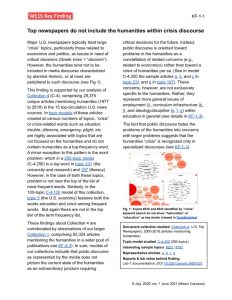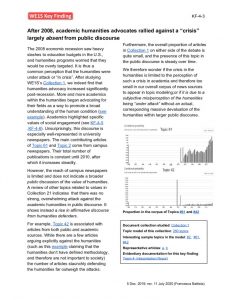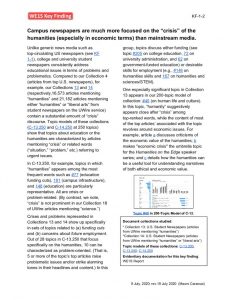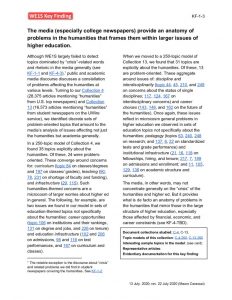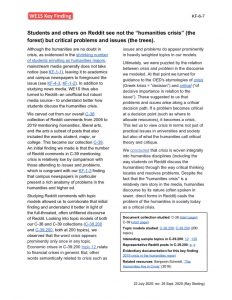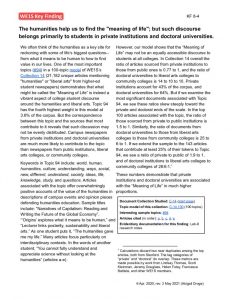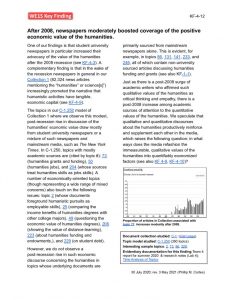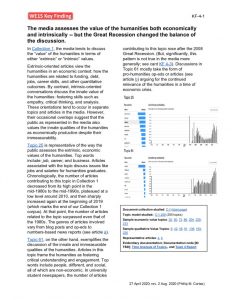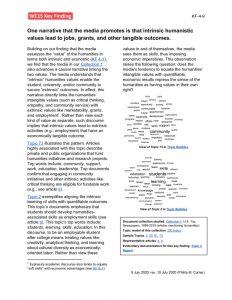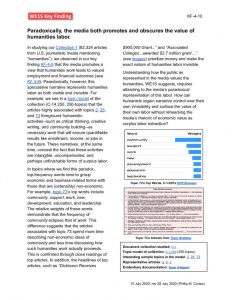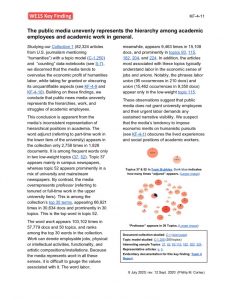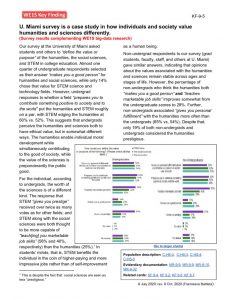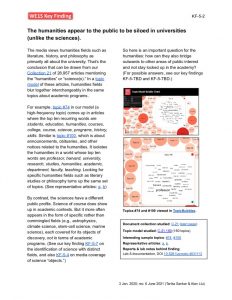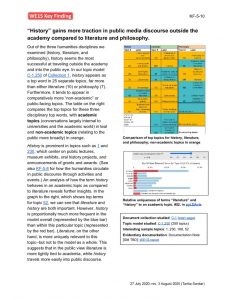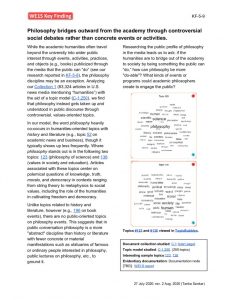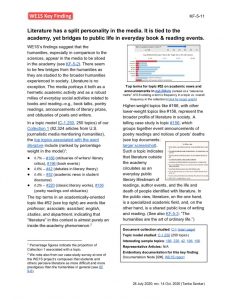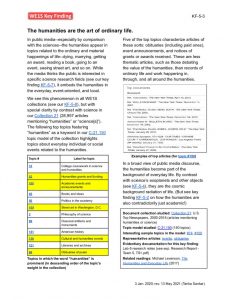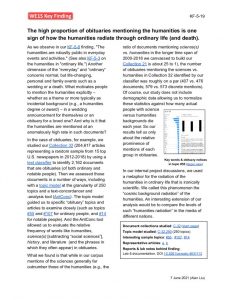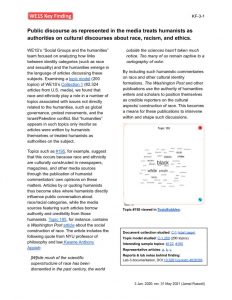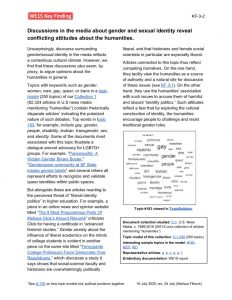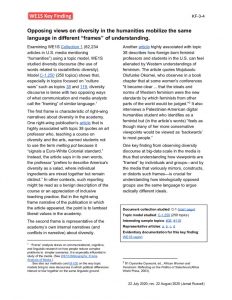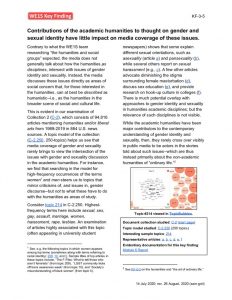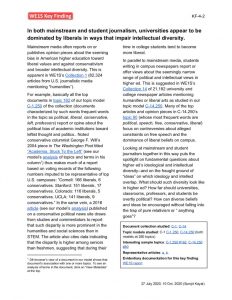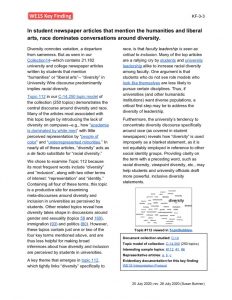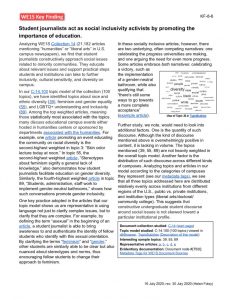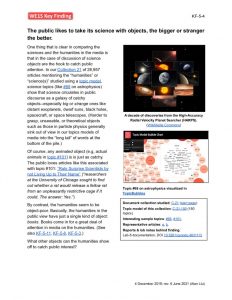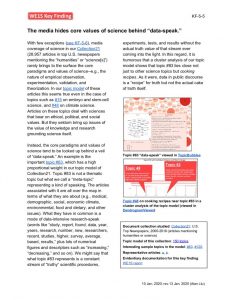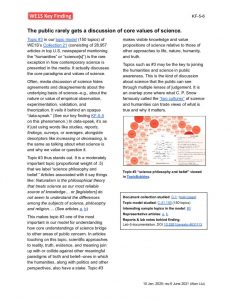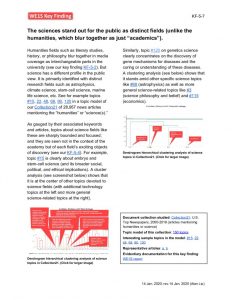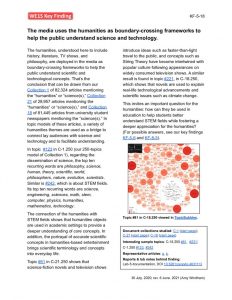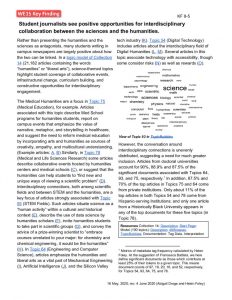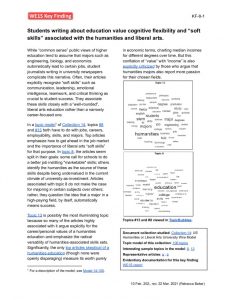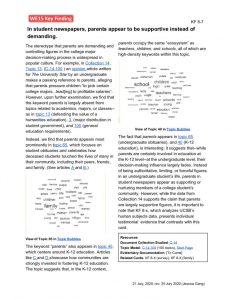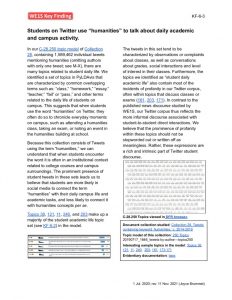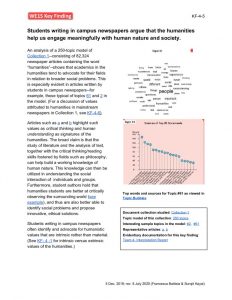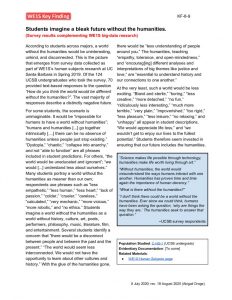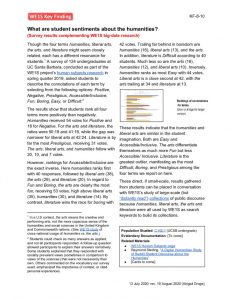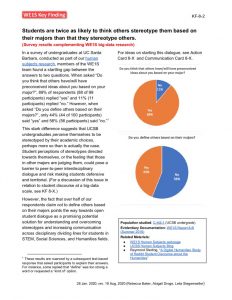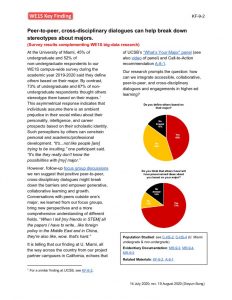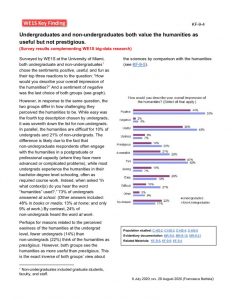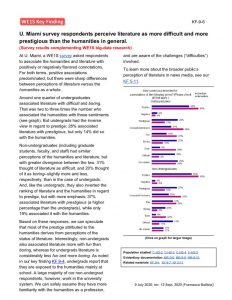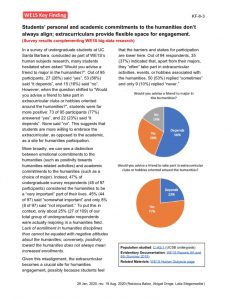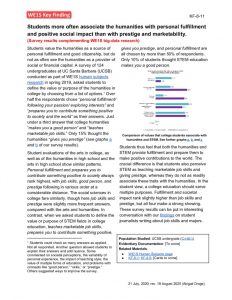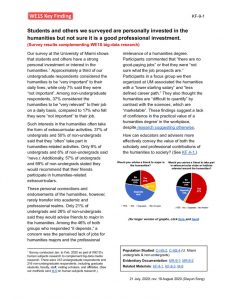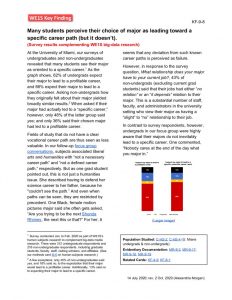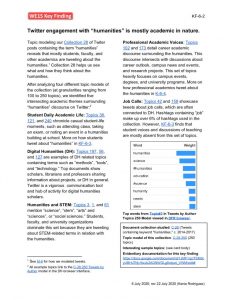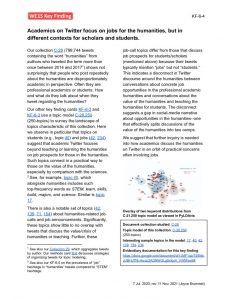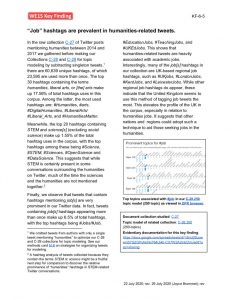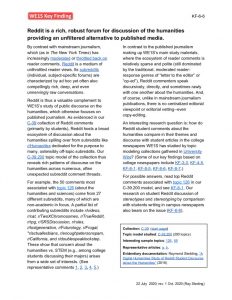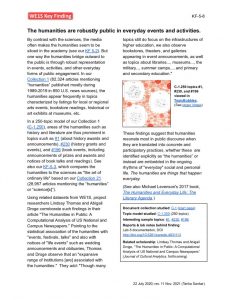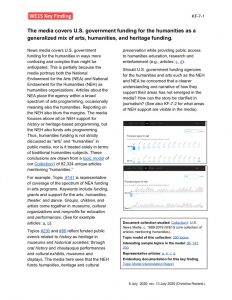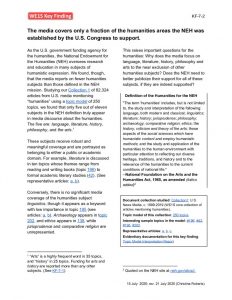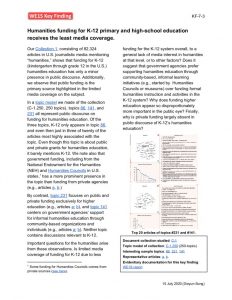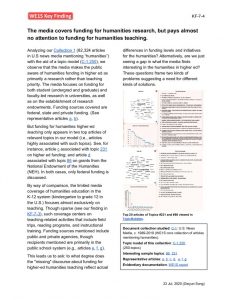WE1S Key Findings are observations based on our project's big-data research on how the humanities are presented in mainstream journalistic media (wide-circulation newspapers, local newspapers, magazines, specialized news sources), online news sites, student journalism, social media (Twitter and Reddit), and other public sources. They also include some findings from the surveys and focus groups we ran as case studies at two of our project’s home campuses (U. California, Santa Barbara, and U. Miami). Our research is conducted through digital humanities text-mining and modeling methods, especially topic modeling. Our case-study surveys and focus groups are "human subjects research" that complement computational "distant reading" by helping us understand our results better through on-the-ground observations of students and others grappling with the nature and value of the contemporary humanities.
These Key Findings are presented in the form of one-page “cards” that communicate clearly in bite-sized chunks. An important “explainability” method in data science originally inspired by documentation methods in medical and nutrition research, “cards” give essential information, examples, and evidence summaries. (See our Methods card M-1 on “cards.”) Each card ends with “Resources” that link to a “documentation deposit” holding our underlying research reports, lab notes, and other evidence.
WE1S’s Key Findings are by intention discrete and modular. But they are also inputs for more complex syntheses in our reports and other downstream or higher-level research and humanities-advocacy outputs. For example, Key Findings are components of WE1S’s Research-to-Action Toolkits, which link them to such other components also presented in “cards” form as Call-to-Action and Call-to-Communication recommendations.
The Humanities Crisis
How, where, and when do people think the humanities are in “crisis”?
The Value of the Humanities
How do people assign worth to the humanities in society?
Broader Profile of the Humanities in Society
How do the humanities bridge from disciplines in the academy to broader society? (See also below on “Humanities and Science in the Media” )
Humanities and Social Groups
What is the relation of the humanities to racial, ethnic, and other social groups as understood in the media?
Humanities and Science in the Media
How do the humanities and sciences compare in their public profile in the media?
Students and the Humanities
What do students think about the humanities in relation other fields, society, and life? WE1S's findings draw on our analysis of mainstream news media and student newspapers, complemented by surveys of students and others at two of our project's campuses (UC Santa Barbara and U. Miami). The surveys and focus groups we ran (following approved “human subjects” research protocols) help give an on-the-ground perspective on what we observed in published media.
The Humanities and Social Media
How do the humanities appear on social media (Twitter and Reddit)?
The Humanities and Ordinary Life
How pervasive are mentions of the humanities in the media as part of the common milieu of individual, social, and cultural existence?
Humanities Funding
What is the profile in the media of government agencies and private foundations that support the humanities?



